
Angelo Bronzino “Adoration of the cross with a bronze snake”. Fresco of the Eleonora of Toledo Chapel in Palazzo Vecchio in Florence, wall at the entrance, size 320 x 385 cm, detail. After 1540, Bronzino performed frescoes in the Palazzo Vecchio in Florence, one of them “Adoration of the cross with a bronze snake”.
If in his portraits Bronzino appears as a significant painter, the multi-figure compositions of the artist particularly clearly reveal the increasing degradation of Mannerism: deliberate unnaturalness and mannerisms of poses, sugary beauty of images, abstract ornamentality of composition, plaque of rationality and cold eroticism.
The aesthetic ideal of mature Mannerism becomes completely divorced from reality, differing in abstractness and lifelessness. It is not by chance that the theorists of Mannerism often replace the concept of “idea” with the notion of “fine manners,” that is, the totality of certain formal stylistic devices. Similarly, one of the main advantages of a work of art is now invenzione, that is, the ability to “compose” a complex and effective composition.
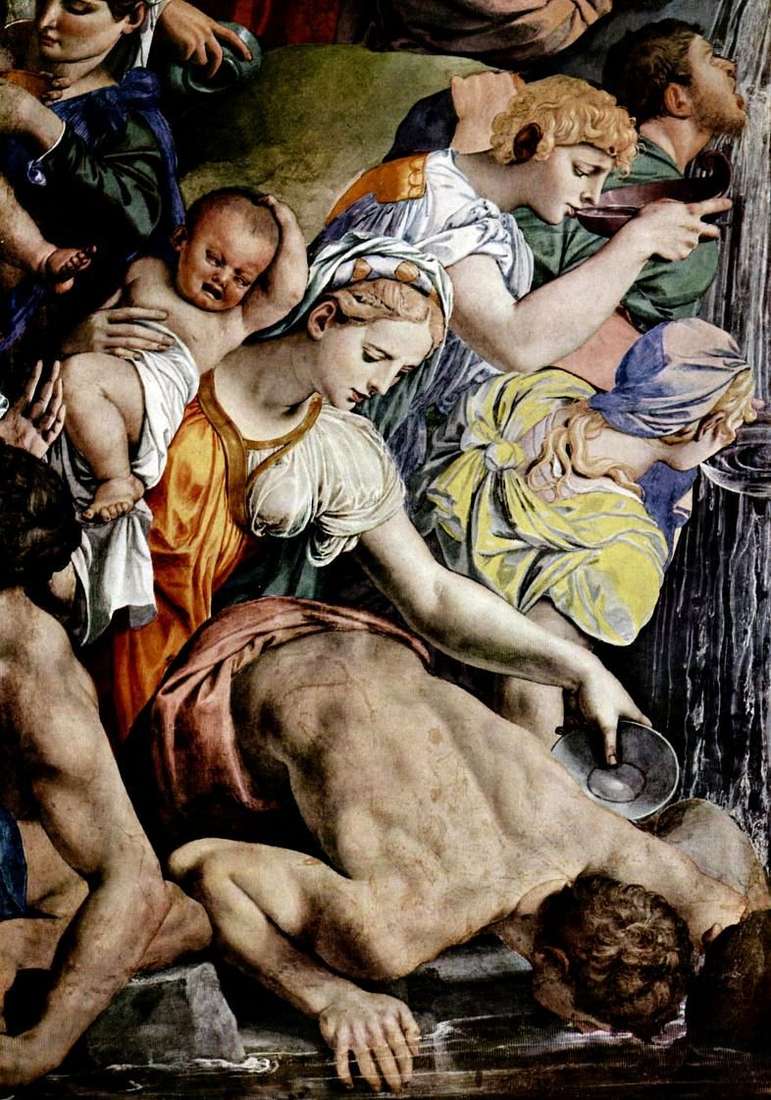 Moses cuts out the water from the rock (fresco) by Agnolo Bronzino
Moses cuts out the water from the rock (fresco) by Agnolo Bronzino Garland with angels (fresco) by Agnolo Bronzino
Garland with angels (fresco) by Agnolo Bronzino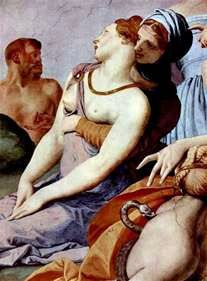 Adoration de la croix avec un serpent en bronze (fresque) – Agnolo Bronzino
Adoration de la croix avec un serpent en bronze (fresque) – Agnolo Bronzino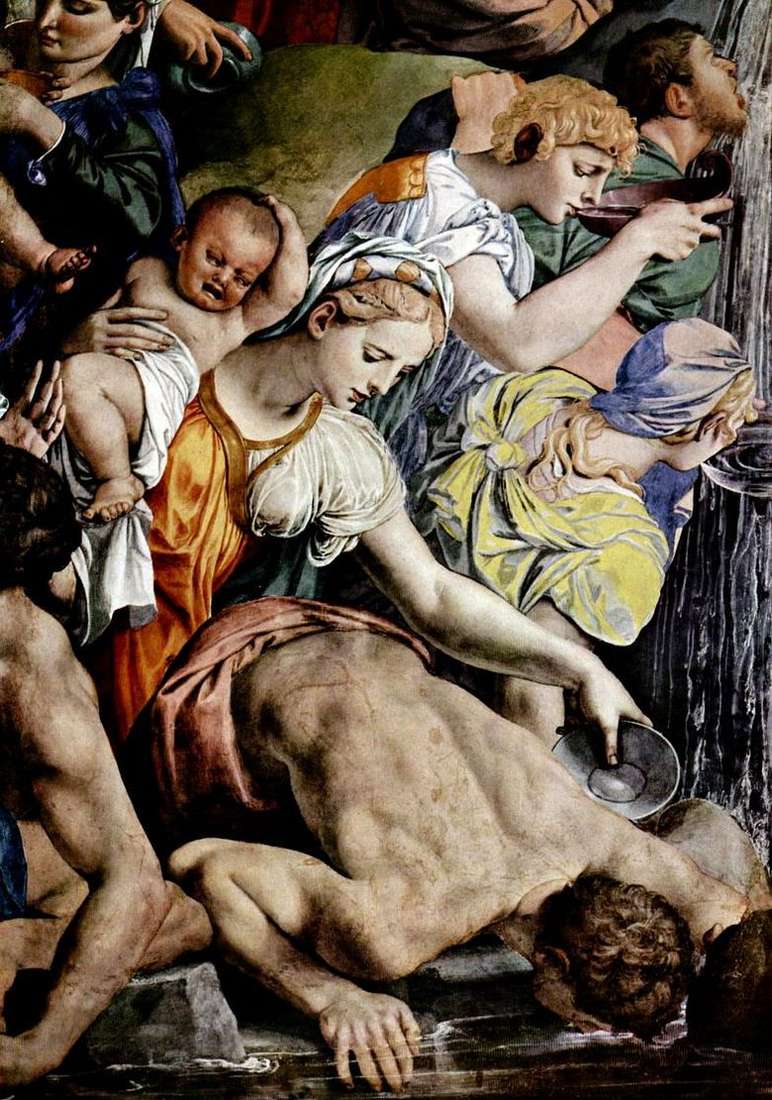 Moisés corta el agua de una roca (fresco) – Agnolo Bronzino
Moisés corta el agua de una roca (fresco) – Agnolo Bronzino Archangel Michael by Agnolo Bronzino
Archangel Michael by Agnolo Bronzino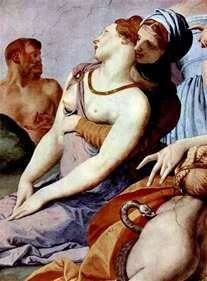 La adoración de una cruz con una serpiente de bronce (fresco) – Agnolo Bronzino
La adoración de una cruz con una serpiente de bronce (fresco) – Agnolo Bronzino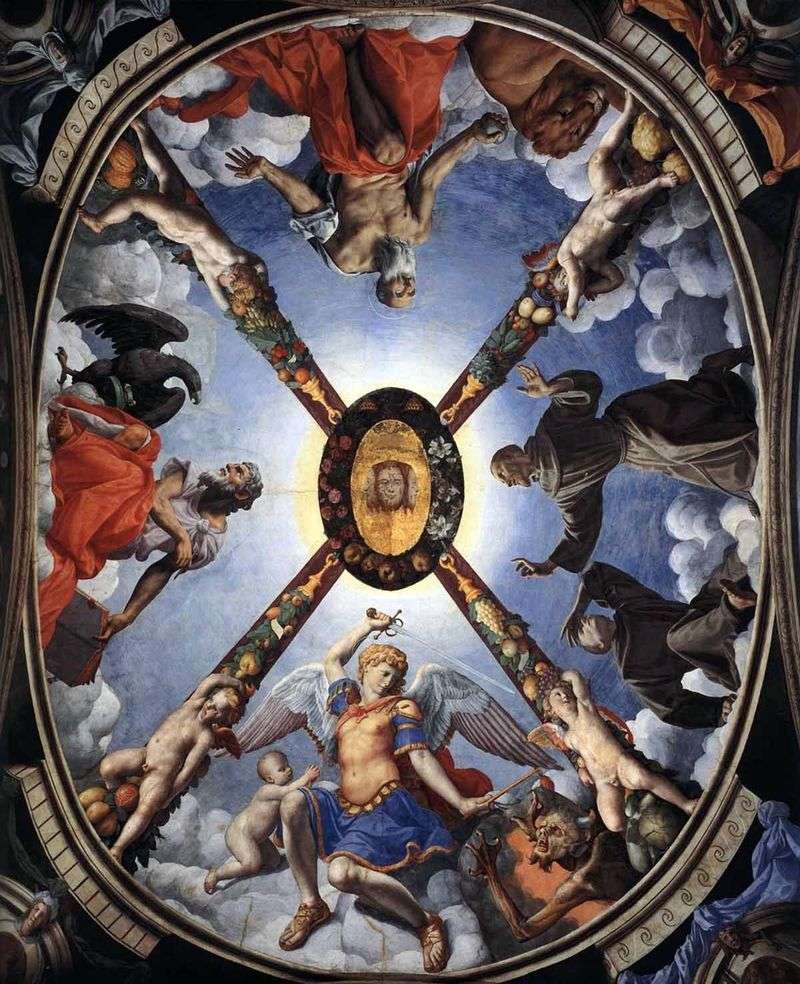 Art decoration, ceiling painting by Agnolo Bronzino
Art decoration, ceiling painting by Agnolo Bronzino Guirnalda con ángeles (fresco) – Agnolo Bronzino
Guirnalda con ángeles (fresco) – Agnolo Bronzino